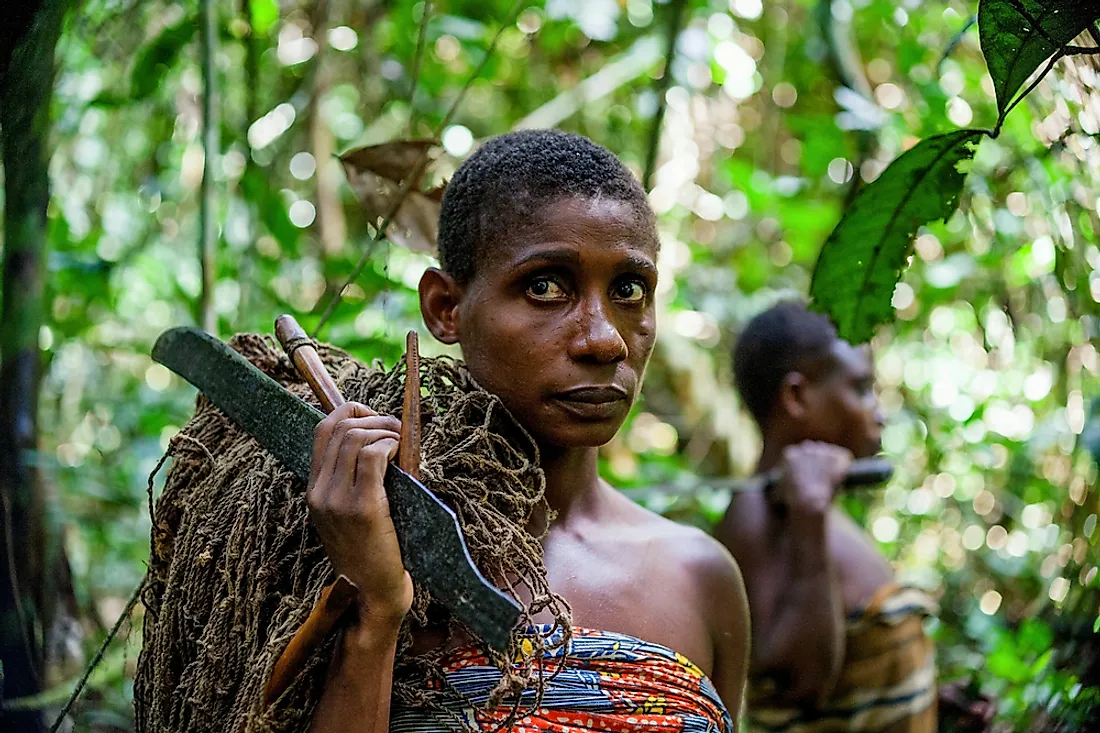What Is The Ethnic Composition Of The Central African Republic?

The Central African Republic (CAR) is a landlocked country in Central Africa. CAR is a mineral-rich country and also has several other natural resources such as crude oil, diamond, gold, hydropower, and cobalt. However, it is one of the ten poorest countries in the world. The CAR covers an area of approximately 240,000 square miles and has a population of about 4.6 million people compared to 1.2 million in 1960. The population is divided into about 80 ethnic groups. Below are the major ethnic groups in the CAR.
Baya
The Baya, also known as Gbaya, are the largest ethnic group in CAR, accounting for about 33% of the country’s total population. The group originated from northern Nigeria in the 18th century and settled in the western region of the CAR and other countries such as Cameroon, the Republic of Congo, and the DRC. They are famous for their strong resistance of the French colonialists in the 20th century. The Baya people living in rural areas are mainly subsistence farmers, cultivating cassava, maize, yam, coffee, tobacco, peanuts, and rice. Their agricultural method is known as “swidden,” a slash and burns farming method in which forests are cleared and used for several years then abandoned. Closely related to the Gbaya people are the Mandja who number approximately 573,000, comprising 13% of the population. They are mainly found in the central region of the CAR and the neighboring countries.
Banda
Approximately 1.2 million people or 27% of the population belong to the Banda ethnic group. The Banda people are also found in countries such as South Sudan, Cameroon, and the Democratic Republic of Congo. In CAR, they are traditionally found in the northeastern region. The Banda people speak the Banda language, which belongs to the Niger-Congo family. Traditionally, the group has been craftsmen, carving wooden objects used for general utility and rituals and slit drums. The Banda people have economically settled farmers in the Savannas mainly cultivating cassava and cotton introduced to them by the French. Christianity is the dominant religion among the people and traditional beliefs are also practiced by a majority.
Sara
The fourth-largest ethnic group in the Central African Republic is Sara, with a population of approximately 441,000 or 10% of the population. The Sara people are Nilotes who originated from the Upper Nile and established settlements northwestern area of the CAR. They are also found in large numbers in southern Chad and north Sudan. The group is genetically closely related to the Kunama people of Eritrea. Coincidentally, both groups speak languages belonging to the Nilo-Saharan family. The Sara people speak the Sara language which is a dialect of the Nilo-Saharan family. The people are mostly animists and their social orders comprise of numerous patrilineal clans.
Mbaka
The Mbaka people are considered an ethnic minority in the CAR. There are approximately 300,000 Mbakas worldwide of which about 177,000 are the Central African Republic, accounting for approximately 4% of the country’s population. They also form a significant minority ethnic group in the Democratic Republic of Congo. The Mbaka people speak the Mbaka language which is a Ubangian language. Some of the country’s notable leaders have been from this ethnic group including David Dacko (first president), Barthelemy Boganda (first prime minister), and Jean-Bedel.
Yakoma
The Yakoma people make up about 4% of the population of the CAR (176,000). A significant number (about 10,000) are found in the Democratic Republic of Congo, giving the name to the city of Yakoma. The Yakoma people are Bantu speaker and related to the Mbaka people. Their primary language is the Yakoma language while ethnic religion is deeply rooted in their identity and way of life. However, some have been converted to Christianity and Islam. The majority of the Yakoma people live in the Base-Kotto prefecture. Although they are few compared to other majority ethnic groups, the Yakomas have been able to produce a president in the history of the Central African Republic (President Andre-Dieudonne Kolingba).
Baggara Arabs
There are approximately 108,000 Baggara Arabs in the CAR, accounting for about 2.4% of the country’s population. The group speaks the Shuwa Arabic which is a regional variety of the Arabic language. Apart from the CAR, the Baggaras are also found in Sudan, Chad, Nigeria, Cameroon, and Niger. The name “Baggara” is derived from an Arabic word which means “cattle herder.” They are traditionally nomadic cattle herders, although some are now settled. Collectively, the Baggara Arabs do not consider themselves a single ethnic group depending on their respective place of origin.
Other Ethnic Groups
Although the Central African Republic has a population of only 4.6 million people, there are over 80 ethnic groups in the country. Apart from the ones discussed above, other notable ethnic groups in the country include the Kara people who are semi-nomads and live in round huts, Wodaabe (belongs to Fulani ethnic group and known for their attires), the Azande of southeastern CAR, and the Baka people who inhabit the southwestern part of the country. A significant number of the Bayaka, Fula, Kresh, Ngbandi, Vidiri, and Yulu are also found in the country. However, their numbers are not known.











